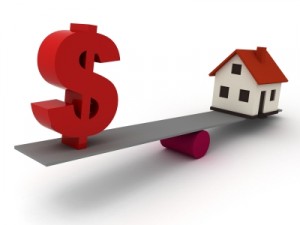Foreclosures
One problem with the current appraisal format, though, is that appraisers often use foreclosed homes as comparable properties, a process that has frustrated more than a few builders, agents and homeowners.
Ben Spofford, the owner of the Aurora, Ohio-based Benjamin Builders, said in a recent Builder Online piece, “it has to be apples to apples. That repossessed property has to be in pristine condition to be equivalent. A listed foreclosure at a comparable square footage may still need a lot of work.”
However, sometimes it’s just not as easy as using pristine foreclosures or avoiding foreclosed properties altogether. Betty Graham, a senior vice president at Fairway Independent Mortgage Corp. who has experience in appraisals, told Builder that though newly constructed homes, ideally, should be compared with other new models, there can be difficult gray areas when assessing a home. For instance, what is an appraiser to use for comparisons when the new home’s neighborhood is predominantly composed of foreclosed properties?
Green Features
Green features, or sustainable energy technologies, have become a big selling point for homes in certain markets, but builders have alleged that the extra costs they absorb to install the green features are not properly represented in the appraised value of the home.
“Anything you can’t put a dollar figure on is undervalued,” said Chad Ray, owner of Olde Heritage Builders in Zebulon, N.C. “Things like indoor air quality, lower carbon footprints, lower maintenance costs — you can’t put a dollar sign on it, so (the appraisers are) just not seeing it. But when a family with an asthmatic child moves into our home and they breath better, they sleep better, and they have fewer sick days, you ask those families what’s more important, and they’ll say those features are far more important than saving $70 on a heating bill.”
So the green features, then, put builders in an awkward position. Determined to sell homes, they install the green features, hoping they will attract energy-minded consumers or home buyers with special needs. Yet, even if the home sells, there’s a chance that the extra efforts will go unrewarded if an appraiser is unsure of the monetary value of the features.
“It’s a really, really tough topic,” Graham said, who added that in the end, such features depend on what the market will pay for them. “In some (places) such as California, where green features are really important to buyers, people will pay more for it.”
But in areas such as the Midwest, Graham said, a buyer will not want to pay more, so an appraiser will not consider it added value.
Jay Hankla, the general manager of Shaddock Homes, an energy-efficient home builder in the Dallas-Fort Worth area, recommended assigning monetary values to given standards, to avoid any price discrepancies. “If you’re Energy Star 3.0 compliant, you should get an automatic $10,000 or $15,000 added to your house,” Hankla said.
Ken Chitester, the director of communications at the Chicago-based Appraisal Institute, offered perhaps the most straightforward advice: educate the appraisers on why the property is valuable, providing them with all the necessary data.
“Things like ratings information, blueprints, specifications of a property’s conservation features—whatever you can get your hands on,” Chitester said. “Appraisers are very interested in working with builders and others to collect green building data.”

